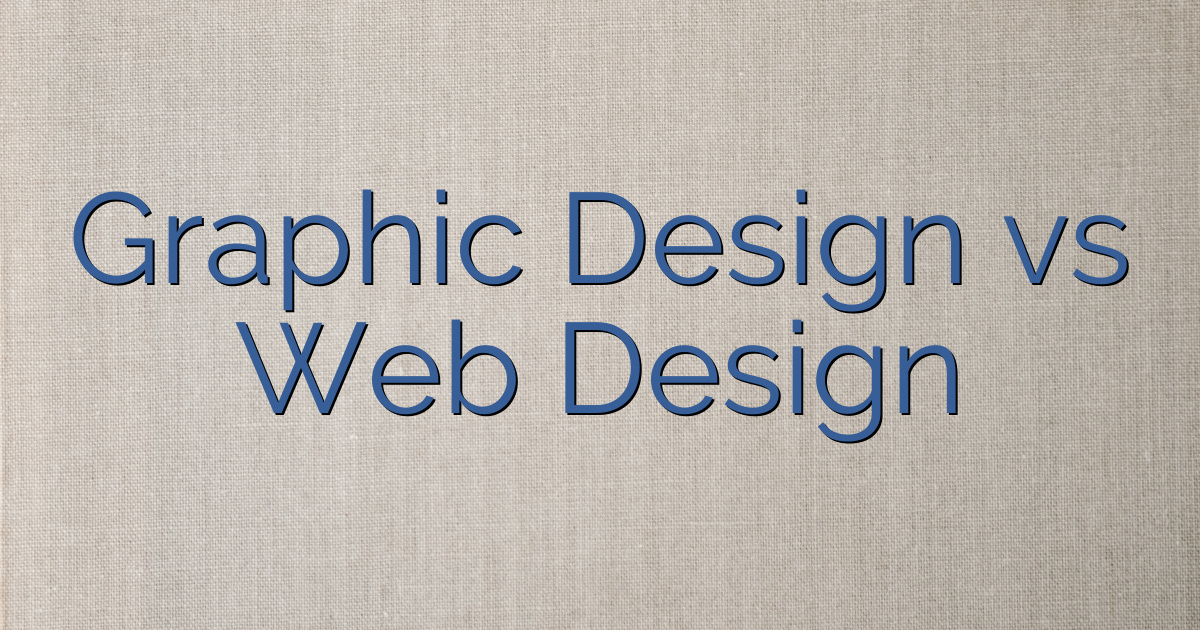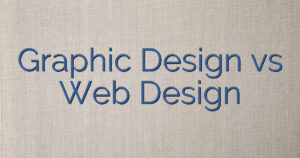 Are you ready to dive into the dynamic world of design? Get ready for a thrilling battle between Graphic Design and Web Design.
Imagine a clash of creativity, where pixels and colors collide in a visually stunning showdown.
In this article, we’ll take you on a journey through the exciting curriculum, the technical skills you’ll develop, and the career opportunities that await.
So buckle up and get ready to make your mark in the world of design.
Are you ready to dive into the dynamic world of design? Get ready for a thrilling battle between Graphic Design and Web Design.
Imagine a clash of creativity, where pixels and colors collide in a visually stunning showdown.
In this article, we’ll take you on a journey through the exciting curriculum, the technical skills you’ll develop, and the career opportunities that await.
So buckle up and get ready to make your mark in the world of design.
Table of Contents
Key Takeaways – Graphic Design vs Web Design
- Both graphic design and web design require a strong emphasis on creativity and an understanding of evolving technology.
- The curriculum and coursework for both fields provide a comprehensive overview of design principles and offer hands-on experience with industry-standard software tools.
- Coursework in both graphic design and web design includes assessments and industry projects that challenge students to think creatively and push design boundaries, enhancing their portfolios and preparing them for the design industry.
- While graphic design focuses on typography, color theory, and layout design, web design emphasizes responsive design, user experience (UX) design, and accessibility. Both fields develop the technical skills necessary for creating visually appealing designs.
Overview of the two majors in design fields
If you’re deciding between graphic design and web design as your major, it’s important to understand the differences and similarities between the two fields. Both graphic design and web design require a strong emphasis on creativity. In graphic design, creativity is essential for creating visually captivating designs that communicate a message effectively. Similarly, in web design, creativity is crucial for designing engaging and user-friendly websites that leave a lasting impression. However, the impact of technology differs in these two fields. Graphic design relies heavily on traditional design tools and techniques, while web design incorporates the use of digital technologies and programming languages to create interactive and dynamic websites. Understanding the importance of creativity and the evolving role of technology is essential for aspiring designers in both graphic design and web design.Overview of the curriculum and coursework of the two majors
The curriculum and coursework for the two majors provide a comprehensive overview of the skills required for both graphic design and web design. In these programs, you will explore the principles of design and gain a deep understanding of how to create visually appealing and effective designs. You will also be introduced to various software tools that are essential in the field of design. To give you a glimpse of what you can expect, here’s a table showcasing some of the key courses in both graphic design and web design majors:| Graphic Design | Web Design | Software Tools |
|---|---|---|
| Introduction to Design | Web Design Principles | Adobe Photoshop |
| Typography and Layout Design | User Experience Design | Adobe Illustrator |
| Branding and Identity Design | HTML and CSS Fundamentals | Sketch |
Overview of coursework, assessments, and industry-relevant projects
Coursework in both majors includes a variety of assessments and industry-relevant projects that allow you to apply your skills and knowledge in real-world design scenarios. Imagine yourself diving into a world of creativity and innovation, where your coursework assessments become opportunities for practical experiences and hands-on learning. Picture yourself working on industry projects that challenge you to think outside the box and push the boundaries of design. Through these projects, you’ll gain invaluable experience, honing your skills as you navigate the world of graphic design or web design. You’ll have the chance to create visually stunning designs, utilizing your artistic flair and technical expertise. These industry-relevant projects will not only enhance your portfolio but also prepare you for the challenges and demands of the design industry. Get ready to unleash your creativity and excel in your coursework assessments and industry projects.Comparison of Technical Skills Developed
Imagine yourself developing a wide range of technical skills that are essential in the design industry. Through your coursework and projects, you will not only enhance your creativity but also acquire the necessary tools to bring your visions to life. Here is a comparison of the software tools used and the creative problem-solving skills developed:- Software Tools:
- Graphic Design: Adobe Creative Suite (Photoshop, Illustrator, InDesign), CorelDRAW
- Web Design: HTML, CSS, JavaScript, CMS platforms (WordPress, Joomla)
- Creative Problem-Solving Skills:
- Graphic Design: Typography, color theory, layout design
- Web Design: Responsive design, user experience (UX) design, accessibility
Comparison of Career Opportunities and Job Roles in Graphic Design Vs. Web Design
When comparing career opportunities and job roles, it’s important to consider the differences between graphic design and web design. In graphic design, you have the chance to work on a wide range of projects, such as creating logos, designing brochures, and developing visual identities for brands. You can find employment in advertising agencies, design studios, or even work as a freelancer. On the other hand, web design focuses on creating functional and visually appealing websites. With the increasing demand for online presence, web designers are in high demand, and there is a great potential for career growth in this field. You can work for web development companies, digital marketing agencies, or start your own web design business. Both fields offer exciting opportunities to express your creativity and contribute to the visual world around us.Comparison of Salary Potential in Graphic Design Vs. Web Design
Now that you have a better understanding of the different job roles in graphic design and web design, let’s compare the salary potential in these fields. Both graphic design and web design offer great opportunities for job growth and competitive salaries. However, the required skill sets for each field may vary.| Graphic Design | Web Design | |
|---|---|---|
| Salary | $$ | $$$ |
| Job Growth | Steady | Rapid |
| Skill Sets | Creativity, Adobe Suite | Coding, UX/UI Design |
Similarities between Graphic Design and Web Design Careers
Both graphic designers and web designers require a strong understanding of visual aesthetics and the ability to create engaging and user-friendly designs. In terms of job market demand, both fields are in high demand, as companies are constantly seeking skilled professionals who can bring their creative visions to life through visual design. The importance of creativity cannot be overstated in both graphic design and web design careers. It is the driving force behind innovative and visually captivating designs that capture the attention of users and effectively communicate a message. Whether it’s creating a stunning logo or designing an intuitive website layout, creativity is at the core of both professions.How Does Animation Differ from Graphic Design in terms of Design Principles and Techniques?
Graphic design and animation differ in terms of design principles and techniques. Graphic design focuses on creating static visual elements, while animation involves bringing those elements to life through motion. Graphic design often utilizes principles like balance, contrast, and hierarchy, while animation adds principles of timing, squash and stretch, and anticipation.
Difference in job prospects between graphic design and web design
If you’re considering a career in either field, it’s important to note that the job prospects for graphic design and web design differ. In the ever-evolving job market, both fields offer exciting opportunities, but they require different skill sets. Graphic design focuses on creating visually stunning designs for various mediums like print and digital media. The demand for graphic designers remains strong, with opportunities in advertising agencies, publishing houses, and design studios. On the other hand, web design deals with the creation and maintenance of websites. With the increasing importance of online presence, web designers are in high demand. They need to have a strong understanding of coding languages, user interface design, and search engine optimization. While both fields require creativity, the skill requirement for web design leans more towards technical proficiency.Factors to consider when choosing between graphic design and web design careers
When deciding between a career in graphic design or web design, you should consider factors such as your technical skills, artistic abilities, and long-term goals. Here are some factors to consider:- Technical Skills: Graphic design requires proficiency in design software like Adobe Photoshop and Illustrator, while web design requires knowledge of coding languages like HTML, CSS, and JavaScript.
- Artistic Abilities: Graphic design focuses on creating visually appealing designs for print media, while web design involves designing interactive and user-friendly websites.
- Long-term Goals: Consider your career aspirations and the job prospects in each field. Graphic designers often work in advertising agencies or design firms, while web designers can find opportunities in web development companies or as freelancers.

